Jurassic Park . Duke Nukem . Virtual reality. Three things from the 1990s that have made a comeback in more recent times.
But what if something from the '90s never left in the first place? Let's take RealPlayer, for example. It used to be the case that if you wanted to stream a (grainy) song or video clip, you had to use it. The problem is that it wasn't that good. Instead, it was awkward and clunky, and the currents themselves took forever to load. When it was finally superseded by Adobe Flash and the new HTML5 standard Getting started with HTML5 Getting started with HTML5 You've heard of HTML5. Everybody is using it. It is being heralded as the savior of the Internet, allowing people to create rich and attractive web pages without resorting to the use of Flash and Shockwave. Read More
Despite this, RealNetworks (which is still in existence, is listed on the NASDAQ and employs over 1,000 people) continued to maintain RealPlayer. The company improved and expanded it. And while no one was paying attention, Real Networks quietly turned it into a serious competitor to VLC, Kodi, and a whole host of other streaming and conversion services.
So RealPlayer still exists, but the RealPlayer from 1998 couldn't be more different than the RealPlayer from 2016. It still sucks, but it's worth seeing how things have changed over the years.
If you were to ask someone over the age of 20 about their enduring memory of RealPlayer, you're unlikely to get a positive answer. RealPlayer was a toxic wasteland of a program that flooded the user's screen with ads and pop-ups, and was prone to corrupting the Windows registry. How to Fix Windows Registry Errors and When to Do Not Disturb How to Fix Windows Registry Errors and When to Do Not Disturb In most cases, fixing our registry will do nothing. Sometimes registry errors wreak havoc after all. Here we'll explore how to identify, isolate, and fix registry problems, and when not to worry at all. Read more . Streams often didn't load completely, and RealPlayer's cryptic error messages became a running joke.
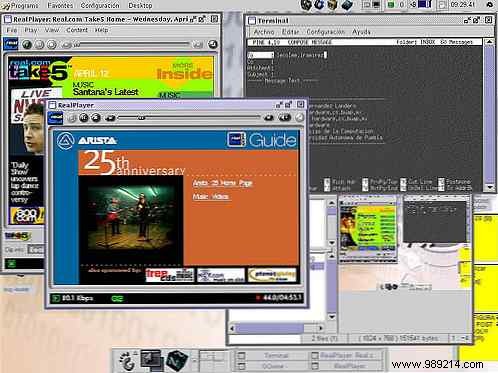
There were also serious privacy concerns. In 1999, a security researcher by the name of Richard M. Smith discovered that RealPlayer assigned a unique ID to each user and called RealNetworks home with a list of all stored media files. Although this sounds strange in our post-Snowden world, at the time it was absolutely horrible. It was for these reasons that, in 2006, PC World was ranked second on its list of the 25 products with the worst technology, just below AOL.
And yet, despite all that, RealPlayer held on. Why?
Well, for all its flaws. - and make no mistake, it was fundamentally flawed software. - It was also undeniably revolutionary. Although services like Spotify, Netflix and Hulu have since popularized streaming media, RealPlayer was the first , and RealNetworks was the Guglielmo Marconi of the 1990s.
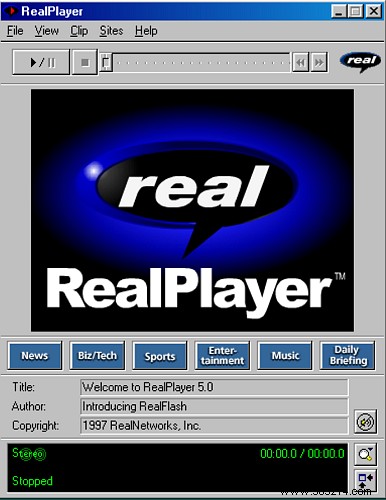
You could say that RealPlayer was a product of firsts. In 1995, the first live sporting event - a battle royale between the New York Yankees and the Seattle Mariners - was broadcast over the Internet using RealPlayer and the RealAudio codec. The Mariners won, and so did RealPlayer.
Two years later, RealNetworks would introduce RealVideo, its video storage and streaming format. This wasn't the smash hit I was hoping for, and the internet just wasn't ready for it.
Streaming services, even at their direst, needed a fast internet connection, and most home users were content with the 56k connection to steam. Worse, RealVideo used a proprietary codec that wasn't as good as the open H.263 standard.
By the turn of the millennium, RealNetworks had positioned RealPlayer as a media player, and more a portal to access a variety of premium content. For $10 a month, users can access a variety of on-demand content from CBS, the Ministry of Sound, the BBC and Al Jazeera. Unfortunately, this was hampered by the dot-com crash and lukewarm consumer interest, and after a few years it was quietly withdrawn.
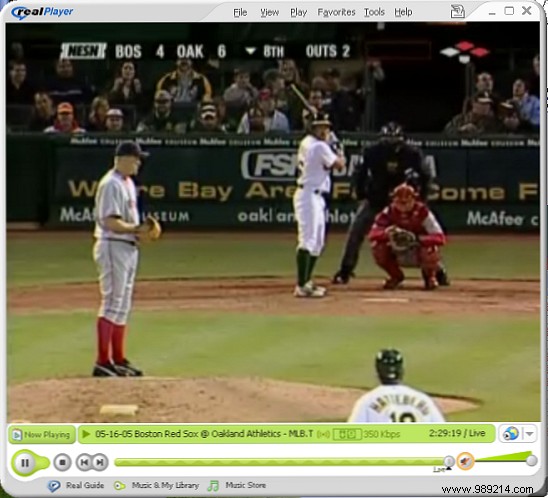
Little by little, people forgot about RealPlayer. New streaming services such as Netflix, Pandora, and YouTube have all rejected it in favor of Adobe Flash. Sites that once depended on him began to abandon him en masse. In 2009, the BBC abandoned RealPlayer. For 2011, the independent BBC World service did the same.
I recently discovered that RealPlayer didn't just go quietly into the night, as I once suspected. RealNetworks continued to work on RealPlayer, and versions of the app are now available for Windows, Mac, Android, and iOS.
Had it improved with age, like a fine vintage wine? Or was it still rotting, like a long-forgotten cherry tomato that had rolled under a refrigerator? I wanted to find out by downloading the version of Windows 10.
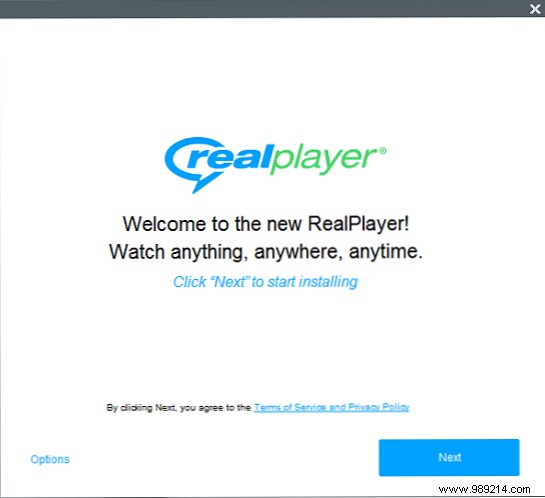
When you install RealPlayer, you'll be prompted to also install a 30-day free trial of Norton Internet Security (frankly terrible).
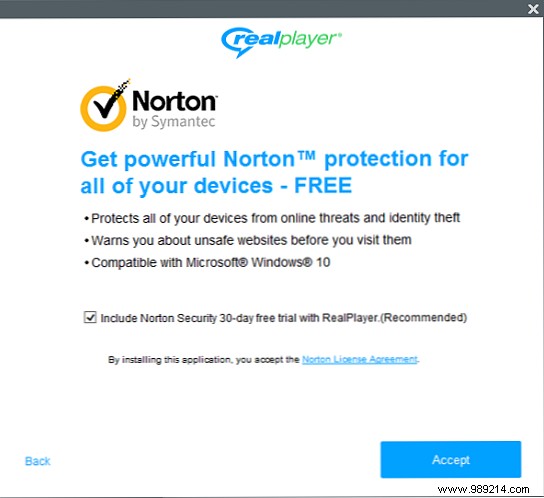
This was not a surprise. Many Windows freeware products are monetized by featuring really fake toolbars 4 Annoying Browser Toolbars And How To Get Rid Of Them 4 Annoying Browser Toolbars And How To Get Rid Of Them Browser Toolbars Seem Not they disappear Let's look at some common annoyances and detail how to eliminate them. Read More Also, the original RealPlayer was known for this kind of thing.
The hard sell didn't stop there. On first launch, you're prompted to sign in to RealTimes, which is a cloud service that's a curious combination of Dropbox and Picasa. There is a free tier, which comes with 1 GB of free storage. This is pretty meager compared to Dropbox's 2GB and Google Drive's 15GB. Anyway, I wasn't interested, so I closed the window.
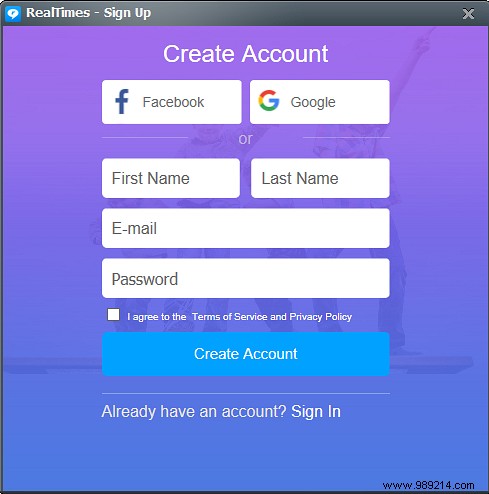
You are then prompted to point RealPlayer to the folders where your media is stored.
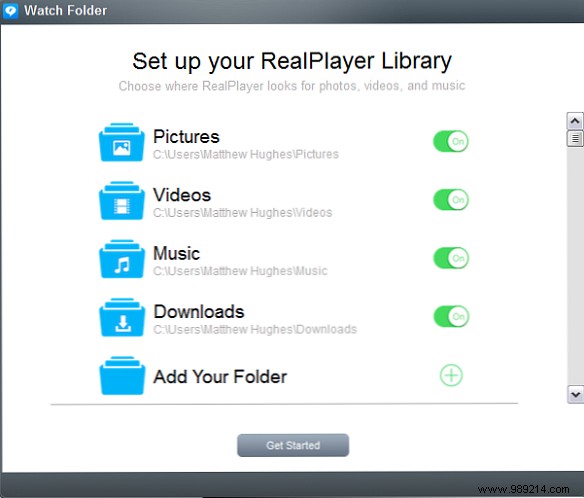
RealPlayer will start building your library. This takes a while. With my powerful Skylake Intel Skylake CPUs:3 Things to Know Before You Upgrade Intel Skylake CPUs:3 Things to Know Before You Upgrade Thinking about upgrading to an Intel Skylake CPU but not sure if you should? Here's what you need to know to help make that decision easier. Read More
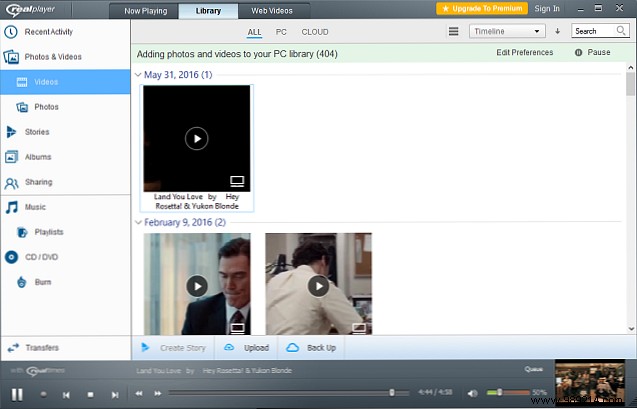
This slowness is a constant throughout RealPlayer. It just doesn't feel sensitive or sharp. There is a delay between clicking something and an action occurring.
Although on paper RealPlayer's codec support isn't as extensive as VLC's codec support, I can't complain. I was able to watch pretty much anything in my movie collection.
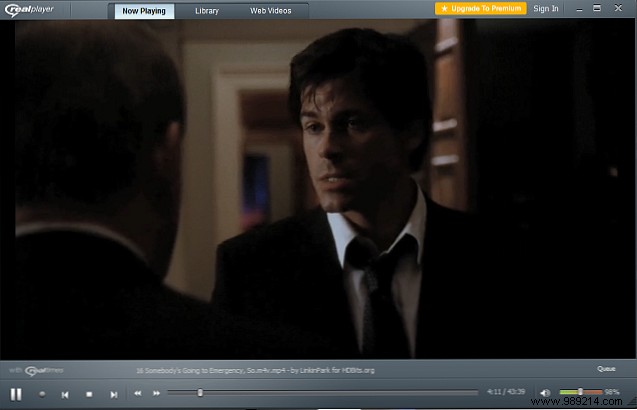
Probably the biggest benefit of the 2016 version of RealPlayer is that it offers one of the most beautiful and beautiful ways to download content directly from YouTube, Vimeo, and more. When it detects that a video is playing, a tab will appear at the top of the screen. Click on it and it will spring into action.
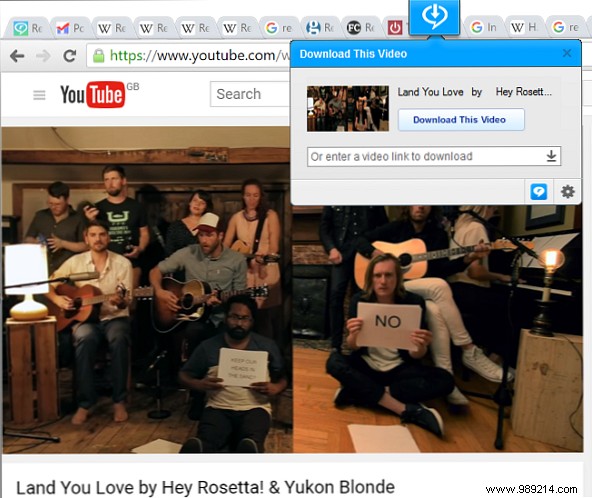
Downloads are done through a manager called RealDownloader. This worked fine, but I was a bit disappointed by the Western Union banner constantly occupying the bottom half of the window.

Within a couple of minutes, the video finished downloading. I was then given the option to upload the video to RealTimes, trim it, or convert it to an MP3. I could also share it with my friends via - yeah, you guessed it - Real time.

RealPlayer also comes with a built-in file converter. Just select the video, click “Convert”, and you're given a dizzying list of options. In addition to the usual suspects, the iPad, Galaxy Tab, and iPhone, there are also devices from yesteryear, such as the Blackberry Storm, Zune, and iRiver Clix.
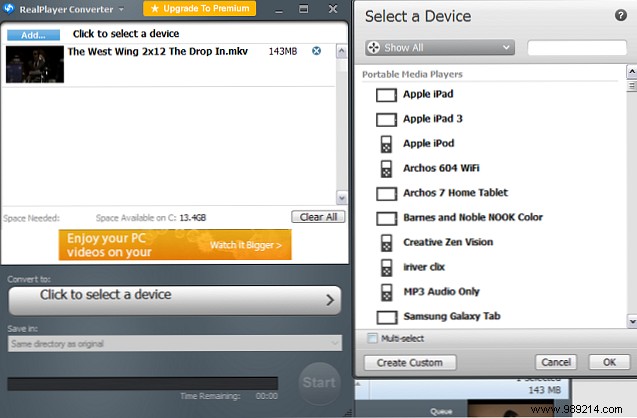
It also allows users to cast their content to Chromecast and Roku devices. I didn't try this as I don't have either. I also didn't try the Roxio burning facility, since my laptop doesn't have a DVD drive.
There's also a RealPlayer Premium version, available for $5 a month. This comes with support for DVD playback, a wider range of codecs, access to audio equalizers, 25GB of RealTimes space, and more. If you don't want to pay a monthly subscription and don't need the cloud services, you can buy a license directly for $39.
In the 1990s, RealPlayer was a fundamentally ambitious piece of software. He laid the groundwork for how we would come to consume media, and in many ways, we owe him an enormous debt of gratitude. But it was also a fundamentally flawed piece of software, the execution of which failed to meet its lofty fairness goals.
20 years later, little has changed. The ambition behind RealPlayer is still there, but this time around, it feels a lot less focused. Instead of doing one thing wrong, RealPlayer does many wrong things.
As a media player, it's slow and clunky. It bombards you with ads and a constant pitch to improve. Although its YouTube 4K Video Downloader video downloader makes it easy to get YouTube videos 4K Video Downloader makes it easy to get YouTube videos 4K videos are all the rage and YouTube is a great place to watch them. Streaming 4K video can be very bandwidth intensive, so save and play them with 4K Video Downloader. Read More is slippery, has more bugs than a hotel room in Manhattan. More than once it crashed, taking my entire system with it.
He wanted me to like the new RealPlayer. As a child of the 1990s, I am prone to bouts of nostalgia. But my experience reminded me that some things are best seen through history's rose-tinted glasses and left unchecked.
Do you have memories of RealPlayer? Are they good, bad or indifferent? Do you still use RealPlayer today? If so, why? Please let us know in the comments below!